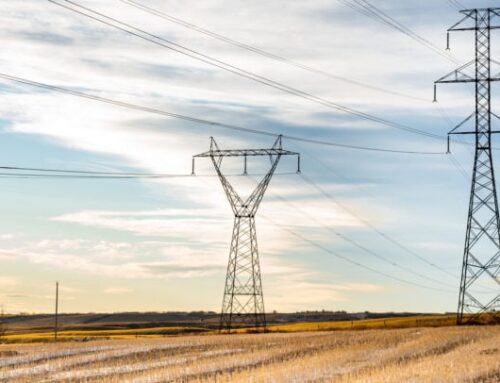The Insatiable Energy Demands of Data Centers Could Increase Fossil Fuel Emissions in Cali
October 1, 2025
Yet some gas plant operators say they have a solution: capturing the carbon. More specifically, using chemical amines such as monoethanolamine, which binds to carbon dioxide molecules in gas to prevent them from being emitted and warming the atmosphere.
The technology has, however, failed to meet capture targets worldwide and requires large sums of capital to retrofit onto power plants. It’s also energy intensive. Research from MIT found that reheating amines to remove the carbon and then compressing it eats 15% more of the plant’s energy.
Additional investment and energy are needed to pipe the compressed carbon for permanent sequestration, such as burying it.
Despite those issues, the idea of retrofits has been embraced in California’s blueprint for cutting emissions, after years of advocacy by influential oil and gas lobbyists.
Some companies are lobbying the Public Utilities Commission to allow power from gas plants retrofitted with new pipelines and amine absorbers and regenerators to receive clean energy credits.
California Resources Corporation, which operates thousands of oil wells in addition to the 550 megawatt Elk Hills gas plant in Kern County, described gas plants such as those affixed with amine tanks as an “ideal” renewable energy resource, even better than wind or solar. The company said it could also reduce pollutants like nitrogen oxides; the plant released 88.5 tons of them in 2023 as well as volatile organic compounds, atmosphere-heating methane and other pollutants.
In a call with investors in May, CEO Francisco Leon said his company was “pursuing multiple new opportunities with AI data center companies.” Its subsidiary Carbon TerraVault received federal permits in 2024 to construct four carbon injection wells in which it plans to bury 1.5 million metric tons of carbon annually through 2050.
Even if this project succeeds, it wouldn’t address methane leaks that comprise 25% to 48% of emissions from gas-fired power, a paper published by Stanford researchers found. And the amines eventually degrade into cancer-causing nitrosamines and ammonia that pollute the air, the paper concluded.
The company didn’t respond when asked how soon its power plant might begin capturing carbon.
Another company, Calpine Energy, wrote to the commission that gas-fired power plants retrofitted with carbon capture technology are “essential to achieving” California’s emissions goals.
Even as renewables have grown as a share of grid power since 2009, Calpine’s 22 gas plants saw some of their largest peak loads and emissions in the last five years, especially during heat waves as people cranked up air conditioners.
That includes the Los Medanos Energy Center, a 500 megawatt gas plant in the Bay Area that emitted record carbon levels in 2022. Calpine is seeking permits to capture small amounts of carbon there, and was overseeing a federally funded pilot project at another plant before funding was cut.
Calpine didn’t respond to questions about its carbon capture projects.
In July, the Federal Energy Regulatory Commission approved plans for Calpine to merge with Constellation Energy, a major power company in the Northeast and Midwest, to become the biggest generator of gas and nuclear power in the U.S. with 50 GW of capacity — equal to about 10% of U.S. electricity consumption.
Constellation cited data centers as a growing sector needing “around-the-clock energy.” Last year, it struck a deal with Microsoft to restart the Three Mile Island nuclear plant in Pennsylvania to power data centers. Three Mile Island was the site of the county’s worst nuclear disaster in 1979, when one of its reactors suffered a partial meltdown.
Calpine and California Resources Corporation have for years been driving forces behind carbon capture regulations in the California Legislature, including this year’s AB 881 and SB 614, both of which task the Office of the State Fire Marshal with regulating carbon pipelines and are awaiting Gov. Gavin Newsom’s signature. The companies spent a combined $2.56 million on lobbying since 2023, not including trade groups.
Search
RECENT PRESS RELEASES
Related Post



